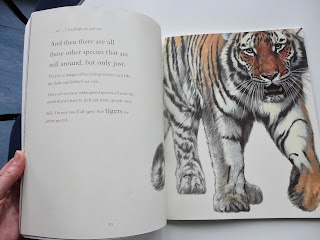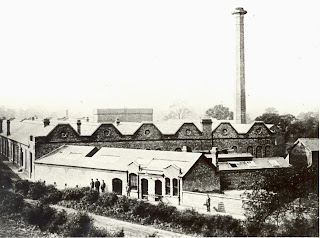Moira Butterfield
www.moirabutterfield.com
@moiraworld
 |
| A cover from the work in progress described below. |
“I like your story. When I
read it, it’s like a movie in my head.”
That was part of a lovely email sent to me
by a young US reader this week, and I was delighted with the phrase she used
because it struck a chord with me, and made me think about my work process.
I work on books for all ages and in several
genres. Whether I’m working on story material, non-fiction or practical
make-and-do ideas. I’m doing my best to take my reader on a journey, and to do
that I’m trying to imagine what effect the words and images are going to have.
If my reader can ‘see a movie’ in their head, I’ve succeeded.
This chimes with something I’ve been
working on in the last few weeks, so I thought I’d share the work process on
the project, because it’s a particularly lively one. By-the-by, it’s also a
peek into a different kind of author commission – intensive, fast and team-led
– rather than picture book texts that develop over time without a specific
brief. However, there are similarities.
The brief I’m going to explore came from an
educational publisher Wayland. They wanted a series for children who are in the
very first years of school (and who would therefore still respond to a picture
book approach). For the visuals we had to use existing photography from
photo-libraries where possible, combined in some way with backgrounds. The
subject of the series was to be ‘my feelings’. The feelings were already chosen
– When I’m - sad, angry, surprised, happy. The size was set – 210 x 210mm, 24pp. Now it was down to me
to think of a way to do it (and do it very fast!).
The first step I took was to get out my
sketchbook, and I began to think and to doodle ideas. What would a child think
about being angry or being sad? How could words and pictures help them to think
about it? How could I create books that were helpful and positive but not
moralizing and patronising? How would the books work in a classroom or with a
parent?
I didn’t think of all these questions at
once. They came to me as I mused and doodled and, crucially, when I started
running mini movies in my head imagining children using the books. I guess I
started to imagine myself as a child. Yes, that sounds a little weird, and I do
occasionally wonder if I am, in fact, crazy when I do this – But then I think
most authors must probably feel this way at times.
I soon realized that I wanted a great deal
of fun in the ‘feeling’ books, and I wanted lively imaginative action – such as
feeling angry enough to blow up like a volcano, making a face angry enough to
scare monsters or feeling angry enough to bellow like an elephant.
 |
 |
| Rough sketches and scribbles for 'Angry' |
Each book needed to be crafted to create a
strong shared experience and give opportunities for role-playing. Above all
they needed to be fun. That approach could only work if we combined the
photographs with very lively graphics.
 |
| Here's me playing about with ideas for an 'angry' contents page (and repeating myself!). |
Soon I was writing, sketching and selecting
a range of possible photos, and luckily I found I was working with a fantastic
design/illustrator team at Rocket Design in East Anglia. They really ‘got’ my ideas, ran with
them and made them work.
 |
| The designers took my text, sketches and photo suggestions and made them dynamic. |
After writing an initial draft of the first book
I realized that I needed to add more interactivity. I added extra
words that children could say, such as ‘pop’ or ‘boom’, that could be
integrated into the visuals. I wanted my young readers to really start acting
and to have a laugh whilst thinking about themselves! I even added a whole
acting spread at the back.
 |
| An 'acting' spread in the process of being designed (the text relates to the rest of the book) |
The words needed to be rhythmic so that
they were easily and satisfyingly read aloud (perhaps by a teacher to a whole
class, or by a child to a reading mentor). They had to get across the meaning,
obviously, and also give the designers opportunities for those lively graphics.
Of course, the text evolved as it went along, and I went down one or two wrong
routes and had to reverse:
“Is angry really the right emotion for
stubbing a toe? Hmm…Now I come to think of it, probably not. I’d be more likely
to blub.”
The whole project sounds a bit complicated
when written down, but it was mostly intuitive. However, it only gelled because
I made sure I constantly thought of the child who was my reader. It’s the same
technique I would use for any age-group or children’s book genre I was working
on. It sounds quite intense, and does feel intense. For any genre, I'm putting in maximum effort and thought.
The thinking process would be similar in a picture book, but then one would have the time and space to go in any direction, unfettered. You might make a mood board, perhaps, or simply sit and play with words. You’d be unlikely to send sketches with your story, but perhaps you might do a few privately to help you think about a character. I’d be interested to hear. Do you perhaps run a movie in your head, then change it and follow different paths? And do you feel a bit crazy sometimes? Is it, at times, a very intense experience?
The thinking process would be similar in a picture book, but then one would have the time and space to go in any direction, unfettered. You might make a mood board, perhaps, or simply sit and play with words. You’d be unlikely to send sketches with your story, but perhaps you might do a few privately to help you think about a character. I’d be interested to hear. Do you perhaps run a movie in your head, then change it and follow different paths? And do you feel a bit crazy sometimes? Is it, at times, a very intense experience?
Perhaps I should do another ‘feelings’ book especially for authors: ‘When I’m creating...’!
PS: the books are still being worked on and
haven’t gone to press yet. Many thanks to Debbie Foy and Steve White-Thomson
for agreeing to let me write about the project.

















.JPG)








































.jpg)




